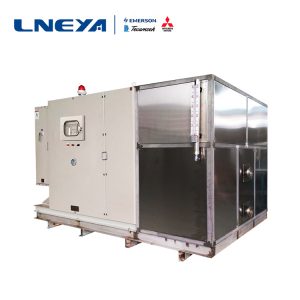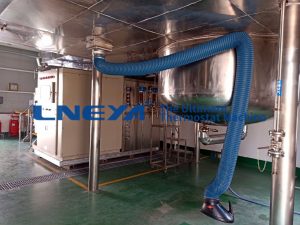Advantages of laboratory low-temperature circulators

The laboratory low-temperature circulator can simultaneously provide constant temperature and current refrigeration, heating, and temperature control equipment. The laboratory low-temperature circulator has a reasonable structure, simple operation, and good stability.
1. The laboratory low-temperature circulator uses a compressor for refrigeration, which consumes energy and improves the exhaust temperature. The refrigerant then exchanges heat with the surrounding medium under the right conditions, transferring the heat to the surroundings. If adiabatic expansion is carried out again, the temperature will decrease.
2. The laboratory low-temperature circulator absorbs isothermal heat from high-temperature objects through an evaporator to reduce the temperature of the object to be cooled. This cycle is continuously carried out to achieve the purpose of cooling. The design of the laboratory low-temperature circulator refrigeration system uses energy regulation technology. Effective treatment methods can not only ensure the normal operation of the refrigerator, effectively control the energy consumption and cooling capacity of the refrigeration system, reduce the operating cost of the experimental box refrigeration system, and achieve a more economical state.
3. The laboratory low-temperature circulator absorbs the heat of the object to be cooled from the evaporator and evaporates it with steam. The compressor continuously extracts the steam generated by the evaporator.
4. The high-temperature and high-pressure steam compressed by the laboratory low-temperature circulator is sent to the condenser, where the cooling medium (such as water, air, etc.) releases heat and condenses into a high-pressure liquid. The pressure is reduced through a throttling mechanism to enter the evaporator. Evaporate again, absorb the heat from the cooled object, and circulate in this way.
5. After the laboratory low-temperature circulator mechanism heats up, the refrigerant changes its flow through a four-way valve. The flow direction of the refrigerant is exactly opposite to the refrigeration process. The refrigerant first passes through the evaporator, then returns to the condenser, and then returns to the compressor.
Recomendaciones relacionadas
-
What should we pay attention to when purchasing cooling equipment for industrial chiller units?
1375When many customers buy refrigeration equipment for industrial chiller units, they don't know what the key points are. Next, let me talk to you. 1. It should be determined according to the use, refrigerating capacity, local power supply, water sou...
Ver detalles -
Organic waste gas treatment device noise description
2120With the increasingly stringent environmental requirements, various manufacturers have paid more and more attention to their own organic waste gas treatment. LNEYA organic waste gas treatment equipment specializes in the treatment of various organ...
Ver detalles -
What are the requirements for the cooling and heating temperature control equipment of the 500-liter
1474The 500-liter reaction kettle cooling and heating temperature control equipment is a dynamic temperature control system, a fully closed circulation pipeline, which can be automatically heated or cooled according to the process requirements. 1. A s...
Ver detalles -
Combinación de calentador y enfriador para el proceso de mezcla de fusión
1347En el proceso de mezcla de materiales fundidos, la combinación de calentador y enfriador se utiliza para lograr un control preciso de la temperatura de los materiales mezclados con el fin de satisfacer los requisitos específicos del proceso. Este tipo de equipo combinado se utiliza habitualmente en la indus...
Ver detalles
 LNEYA Enfriadoras industriales Fabricante Proveedor
LNEYA Enfriadoras industriales Fabricante Proveedor













